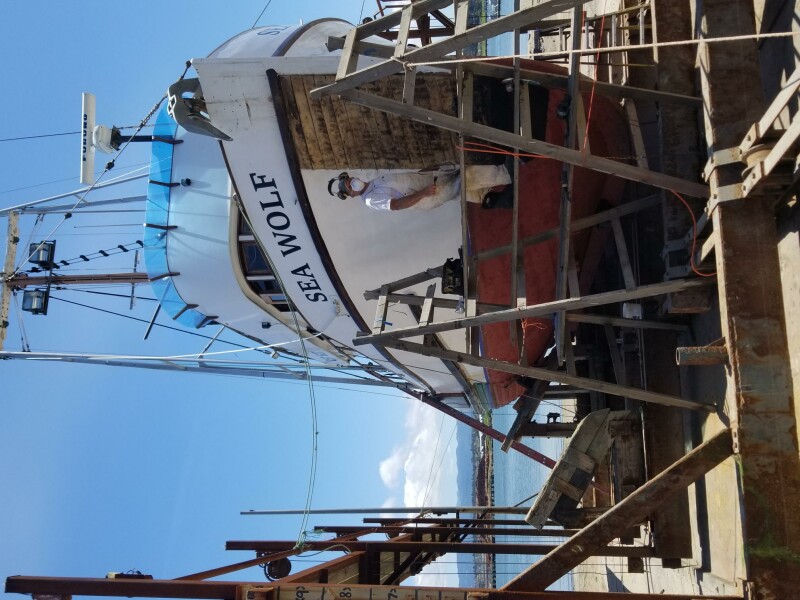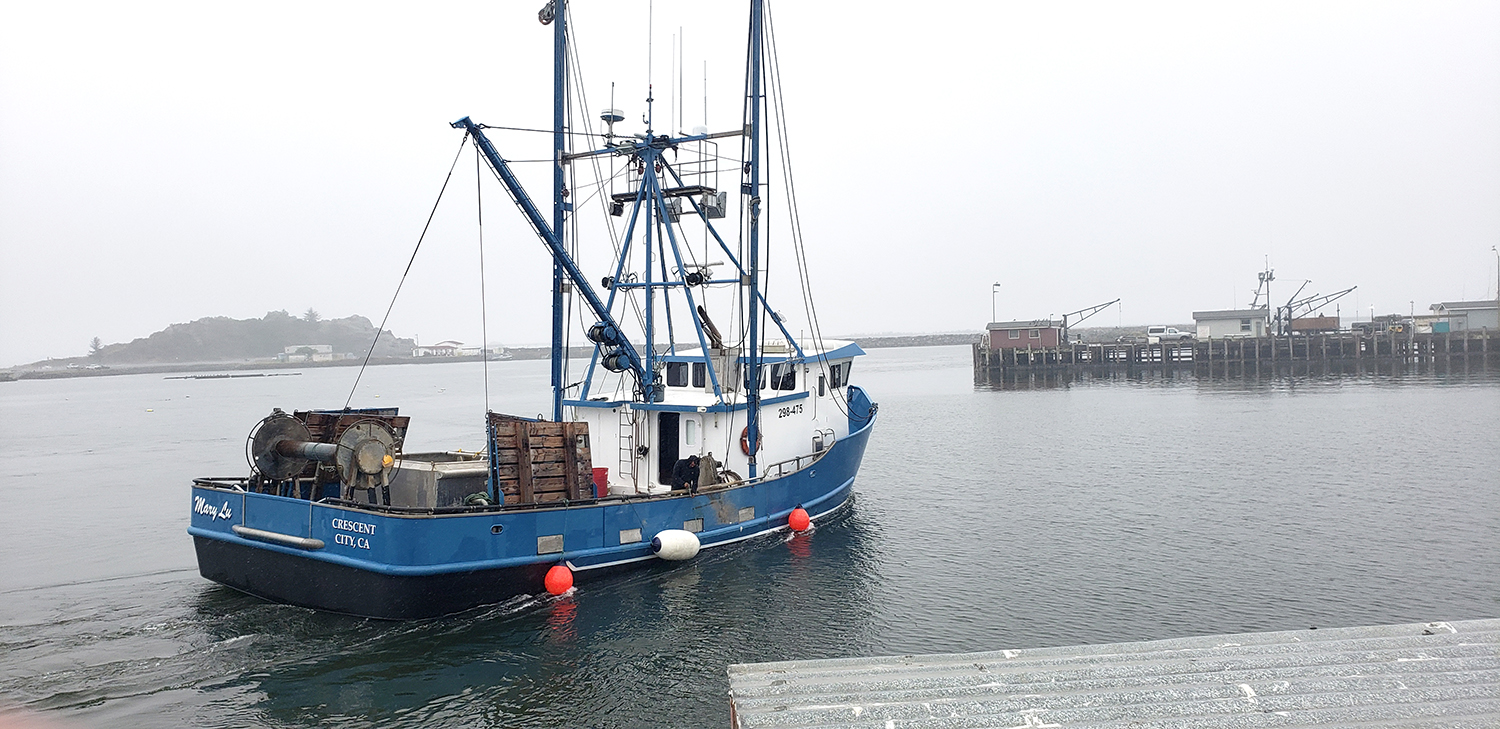On May 27, Fashion Blacksmith in Crescent City, Calif., launched the Mary Lu, and on June 1, the 57' x 25' Dungeness crabber and shrimper was back shrimping while sporting a new pilothouse, a new main mast and shafting.
It wasn’t the first time Fashion Blacksmith hauled the Mary Lu. Four years ago, she was sponsoned and lengthened. This time “the house was the main thing,” says Fashion Blacksmith’s Ted Long. He refers to the “house” as a Texas-style step-pilothouse.
The previous house had limited visibility looking from the helm station to the aft deck. Now when going from the lower house to the helm station, the steps go up an additional three feet. “It is a much taller step-in house,” says Long, which allows for larger windows and thus better visibility when looking back over the house.
In the process of building the pilothouse, the deck needed new steel. “We cut out a lot of the original deck. It was rusted through from windows and doors leaking.”
Sharing shop floor space with the Mary Lu was the Gladnik, a 68' x 25' 6" crabber and tuna boat built at Fashion Blacksmith in 1971, who then lengthened and sponsoned her three years ago. This time the Gladnik was in for a new pilothouse and a new main engine. The original engine, a 275-hp, 8-71 Jimmy was underpowered for the lengthened and sponsoned hull. A 525-hp John Deere is taking its place. “Since the boat had been sponsoned, the easiest way to get the engine out was through the deck,” says Long.
Once the wheelhouse was removed and the deck opened up, “they just decided to redo everything while the engine room was opened.” The Gladnik had a 65-kW John Deere generator; now a second 65-kW John Deere generator is going in, along with a 25-kW Northern Lights hotel pack, plus new engine coolers, new circulation plumbing and new hydraulics.
Over all that goes a pilothouse on a new whaleback deck and a new square tubed, double-legged mast.
Down the coast from Crescent City, in Samoa, Calif., David Peterson, a longtime boat carpenter who specializes in working on wooden commercial fishing boats, recently completed a number of repair jobs at Zerlang & Zerlang.
That includes the 50-foot Sea Wolf, a salmon and albacore troller built in 1949 that was hauled out the first part of June. Peterson corked the hull with cotton and oakum, stripped down the anchor guard, then installed a new guard.

The Sea Wolf’s previous owner was Jack Carlson who died at the beginning of the year of cancer. “He was very near and dear to everyone,” says Peterson, “but it looks like the boat’s new owners will take as good of care of her as he did.”
Prior to the Sea Wolf’s arrival, Peterson replaced a 4-foot length of cutwater in the Rian Faith’s stem after the 52-foot salmon troller was involved in a collision. “The inner stem and the planks were intact,” Peterson notes. He installed a partial bow iron that enables the Rian Faith to go fishing; a full bow iron will go on when she’s hauled.
In early May, Peterson corked parts of the Trio 3, which he describes as a northern house forward halibut schooner-type hull built about 1945. “Corked here and there, mostly refastened over pretty much the whole boat.” Three-inch stainless screws replaced galvanized cut nails, which Peterson notes, “don’t last that long.” The frames were in good shape.
At the end of May, the West Coast, a 45-foot albacore boat built in 1942, went back in the water without leaking. “It was the worst leak I ever had,” Peterson says. After corking the outside of the hull didn’t stop the leak and the fact the boat only leaked when it came off the boatyard’s carriage, told Peterson the keel bolts were probably the culprits. “We ended up putting nine keel bolts in and pinching it shut,” he says.
Keel bolts went into the aft part of the shaft log and then keel bolts went forward of the shaft log. A 3/4-inch bolt went down through the center of the horn timber. A steel bracket was built around the back end of the keel with a tab “that’s tabbed up through the bottom of the horn timber with a single half-inch bolt. Essentially, it’s a steel sling in the back end of the keel for a bolt.”
During the repair work, the West Coast was periodically lowered into the water and slid off its carriage to see if the hull still leaked. “We put him back and forth in the water five times to get the leak.” Only on the fifth trip off the carriage did the West Coast’s hull prove to be tight.
“When it comes to leaking in boats,” says Peterson, “as long as you have victory, nothing else matters. I’ve always been able to find the leak, but this one was scaring me.”







